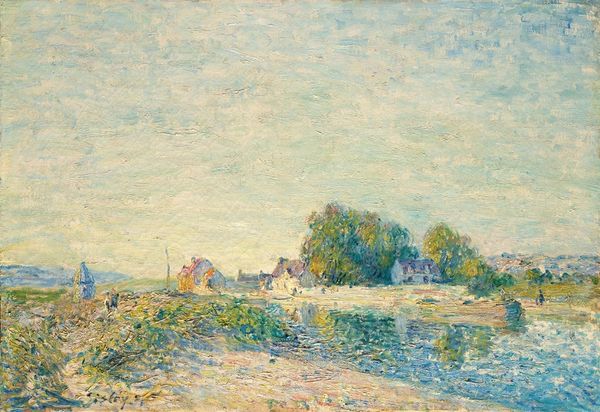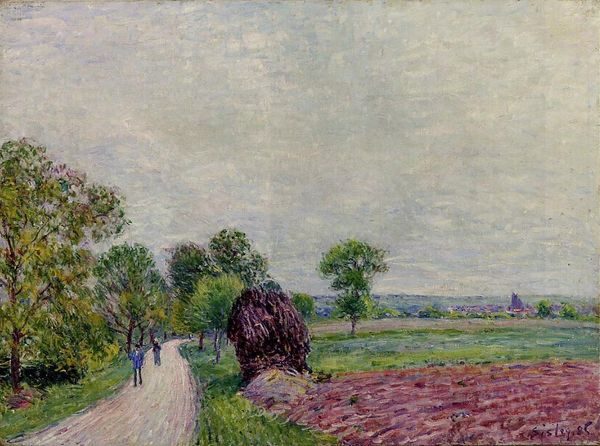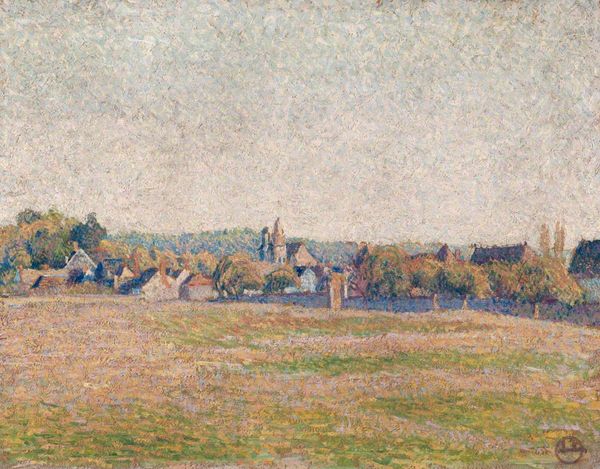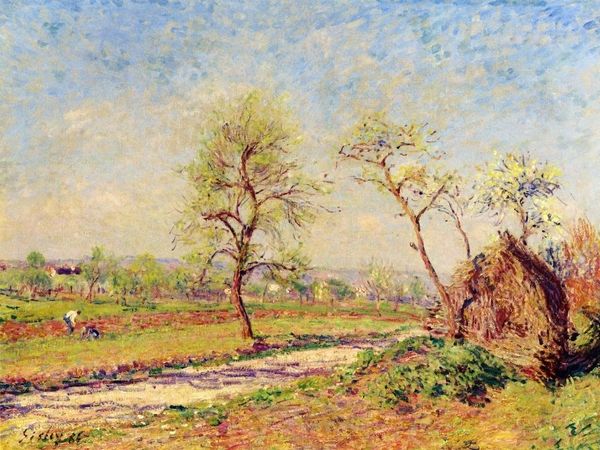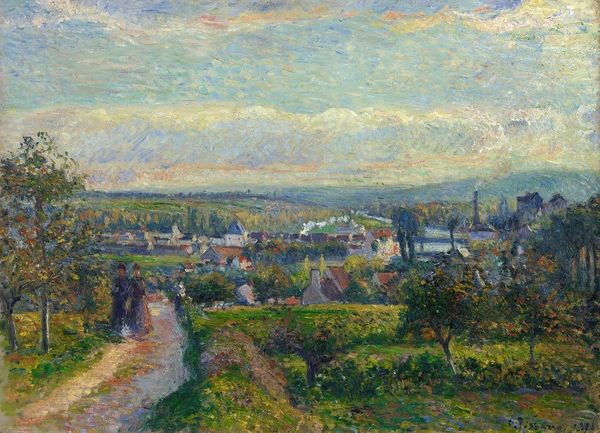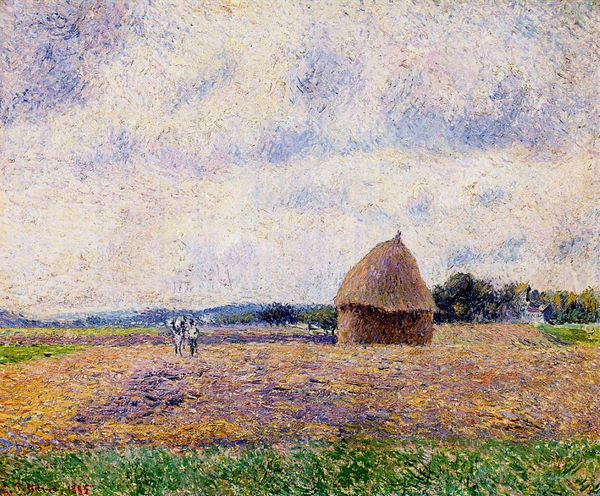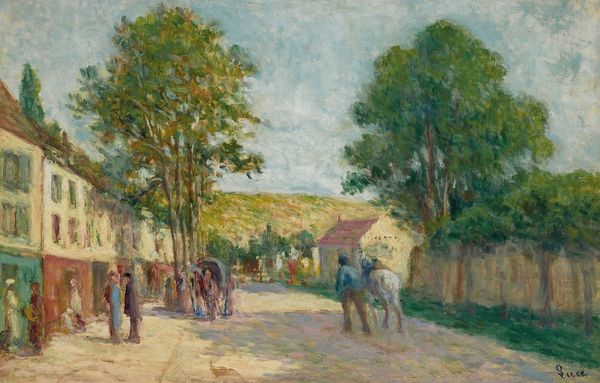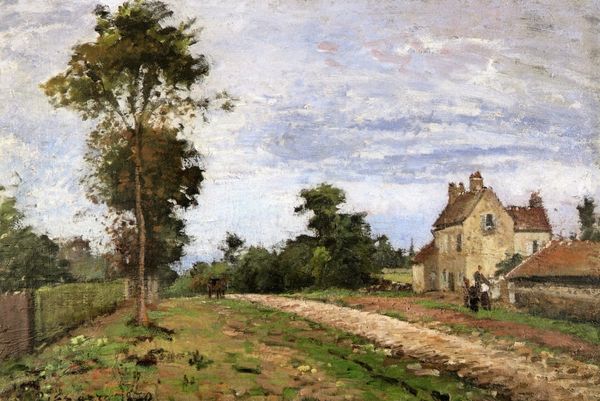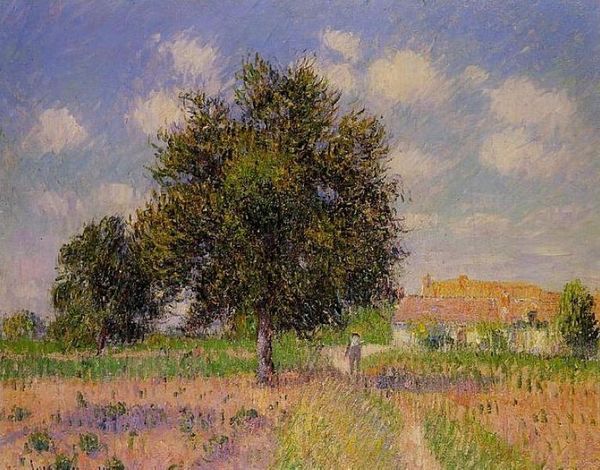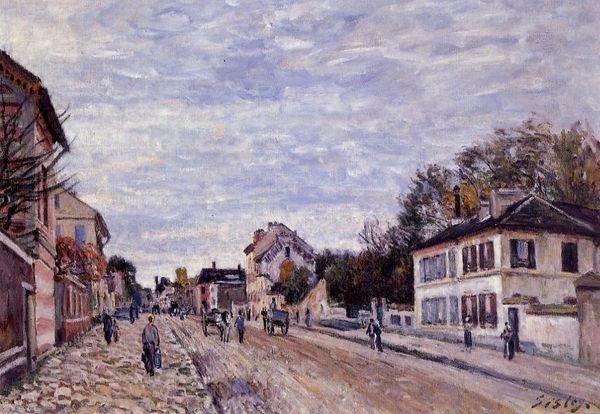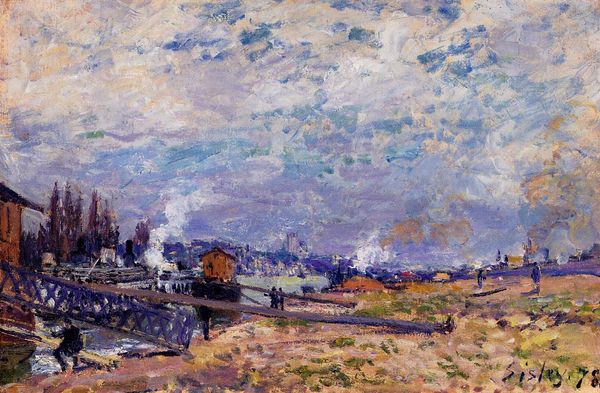
Copyright: Public domain
Curator: What strikes me first is the quietude, almost melancholic atmosphere of this bridge scene. Editor: That's quite fitting, given the work we're about to explore, Camille Pissarro’s “The Pontoise Bridge,” painted in 1891. He often explored the relationship between urban development and the rural landscape in France. Curator: It certainly captures a specific moment in that relationship. The way Pissarro renders the sky, heavy with those clouds, and the muted colors create a strong sense of place. It's not just a pretty picture; there's a weight to it. I can't help thinking about class. The horses here are rendered without sentimentality, working animals on a path... What’s in the carts? Editor: Probably vegetables on their way to the marketplace. We know that in the 1880s and 90s, Pissarro turned his attention increasingly toward peasant life and the daily workings of these small French communities. There was burgeoning Anarchist theory that captured his political interests, perhaps making its way into his artistic themes. Curator: Ah, that gives a very different angle to how we perceive this "quietude." It isn't just atmospheric; it’s potentially pregnant with the tensions inherent to labor and class dynamics. What do we know about his exhibitions at this time? Was he actively trying to spark such conversation, or was this work shown in bourgeois settings? Editor: His earlier impressionist works had been featured in several independent exhibitions, often met with both criticism and praise, challenging the traditional art establishment. Later in his career, his work began to embrace some more avant-garde exhibitions that included radical artists critiquing capitalist society, like Pissarro’s son Lucien. Curator: The layers begin to deepen, then. Even a seemingly simple landscape implicates him in complex social conversations about work, place, and power. And how the work’s style reflects an awareness of the societal tensions—a commitment, so to speak. Editor: Precisely. And examining it in today's contexts, such conversations take on new significance. These visuals, though painted over a century ago, remain remarkably relevant when contemplating socio-economic stratifications in the 21st century. Thank you, it always illuminates my thoughts hearing your fresh perspectives on art and history. Curator: And your socio-political frameworks enrich my understandings too! Thank you!
Comments
No comments
Be the first to comment and join the conversation on the ultimate creative platform.
